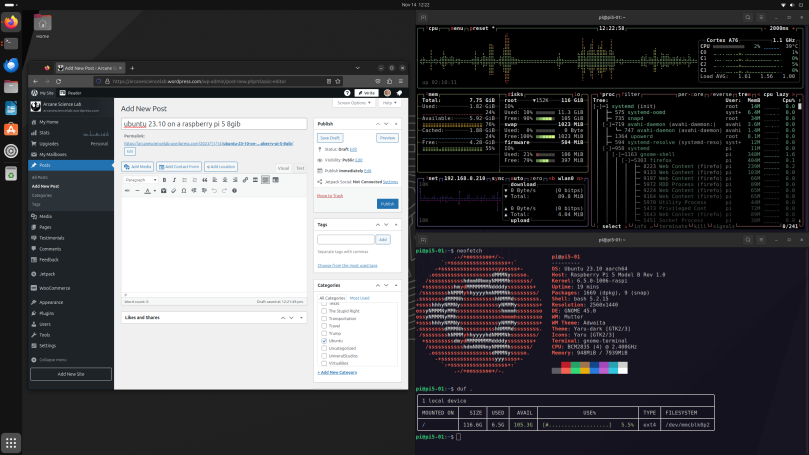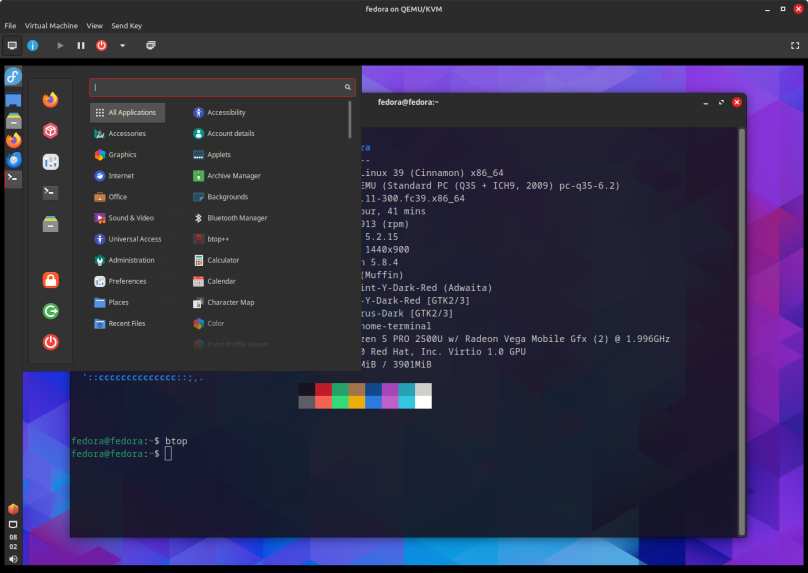
Update 4 March 2024 — Ubuntu 23.10 is finally fixed
As noted in a link at the bottom, Ubuntu 23.10 finally supports the SPI devices on a Raspberry Pi 5, meaning that all hardware I need supported (I2C, SPI, GPIO) appears to be fully functional when running Ubuntu 23.10 with all the latest OS and kernel updates. There is absolutely no need to install Raspberry Pi OS, formerly known as Raspbian, on the Raspberry Pi 5.
Update 9 January 2024 — That Didn’t Last Very Long, Did It?
I am flopping back to Ubuntu after having flipped back to Raspberry Pi OS. I just could not stand the loss of power and convenience I experienced with Ubuntu, but not with Raspberry Pi OS. They should rename Raspberry Pi OS to Raspberry Pi Mess.
Update 7 January 2024
I have decided, for the second time (the first being back in 2018 with Ubuntu 20.10, see link below) to move back to Raspberry Pi OS (formerly Raspian) because the SPI subsystem isn’t installed/doesn’t work. I’ve tried everything I know, including slumming through the various fora and as well as searching on the web to find a solution to make it all work. It won’t. So as of right now I’m back on Raspberry Pi OS so I can get back to the reason I purchased my Raspberry Pi 5 board, interfacing with external hardware.
I put this in because of the insane number of hits on this post over the last few days. So be warned. Ubuntu 23.10 is very pretty and very nice as an OS, especially compared to the current Raspberry Pi OS, but it’s still missing critical support for some key Raspberry Pi 5 hardware subsystems. It’s a shame, really. I would have loved to stay on Ubuntu.
Original Post
After receiving two copies of the latest Raspberry Pi 5, I finally installed two different operating systems on 128GB SanDisk micro SDXC cards and booted up one of the SBCs.
The first OS i tried was the recommended Raspberry Pi OS built from Debian 12 for 64-bit ARM. I used the basic desktop. Once it booted up on the RPi 5, it ran quite well. Compared to how it runs on the RPi 4, execution of the operating system was highly performant, and all actions such as starting an application or moving or resizing windows was absolutely smooth with no discernible lag whatsoever.
The problem was trying to do any work with that operating system. As has been noted and warned about in other stories, not everything has been fully updated on Raspberry Pi OS for the RPi 5. I ran into one such problem when I tried to perform a screen shot with the utility scrot. I’ve used it before on older versions of the operating system without any issues. This time scrot simply created a black image when it was run. There were some other issues, but that wasn’t the real reason I left it. No, Raspberry Pi OS is still the limited environment it’s always been going back to the Raspberry Pi 3. I’m spoiled for choice these days, and all the other Linux distributions are polished and provide a solid user experience. Raspberry Pi OS is falling behind in that department.
The second operating system I tried, and the one I’m writing this review on, is Ubuntu Desktop 23.10 for Raspberry Pi 5. It is as easy to download and copy to another SDXC card. It booted up almost instantly, even the first time. Once up and running it looked and felt like an Ubuntu installation on every other personal computer I have it installed on, and that’s a significant advance for this distribution. Every other time I’ve tried to install and run Ubuntu, it’s been so slow that I had it off my Raspberry Pi 4s within 15 minutes. This time, it’s on to stay.
There is one odd feature of Ubuntu on the Raspberry Pi 5. I have the official active cooler in place, and it has a tiny fan in it. Under Raspberry Pi OS it would occasionally turn on while I was using the desktop. Under Ubuntu 23.10 it’s on all the time and running at full RPMs. While it’s loud enough that I can hear it from where I sit, it’s not too loud, more like background white noise, but noticeable. I would note that the CPU temperatures have been in the upper thirty degree centigrade range with Ubuntu. Under Raspberry Pi OS the CPU temperatures where 20° C higher. The choice in this case is I can compute in near-silence with Raspberry Pi OS or run a lot cooler, but a bit louder, with Ubuntu.
I might give Fedora 39 a quick test to see how it works, but if I don’t, running Ubuntu 23.10 is an excellent user experience on the Raspberry Pi 5.



You must be logged in to post a comment.